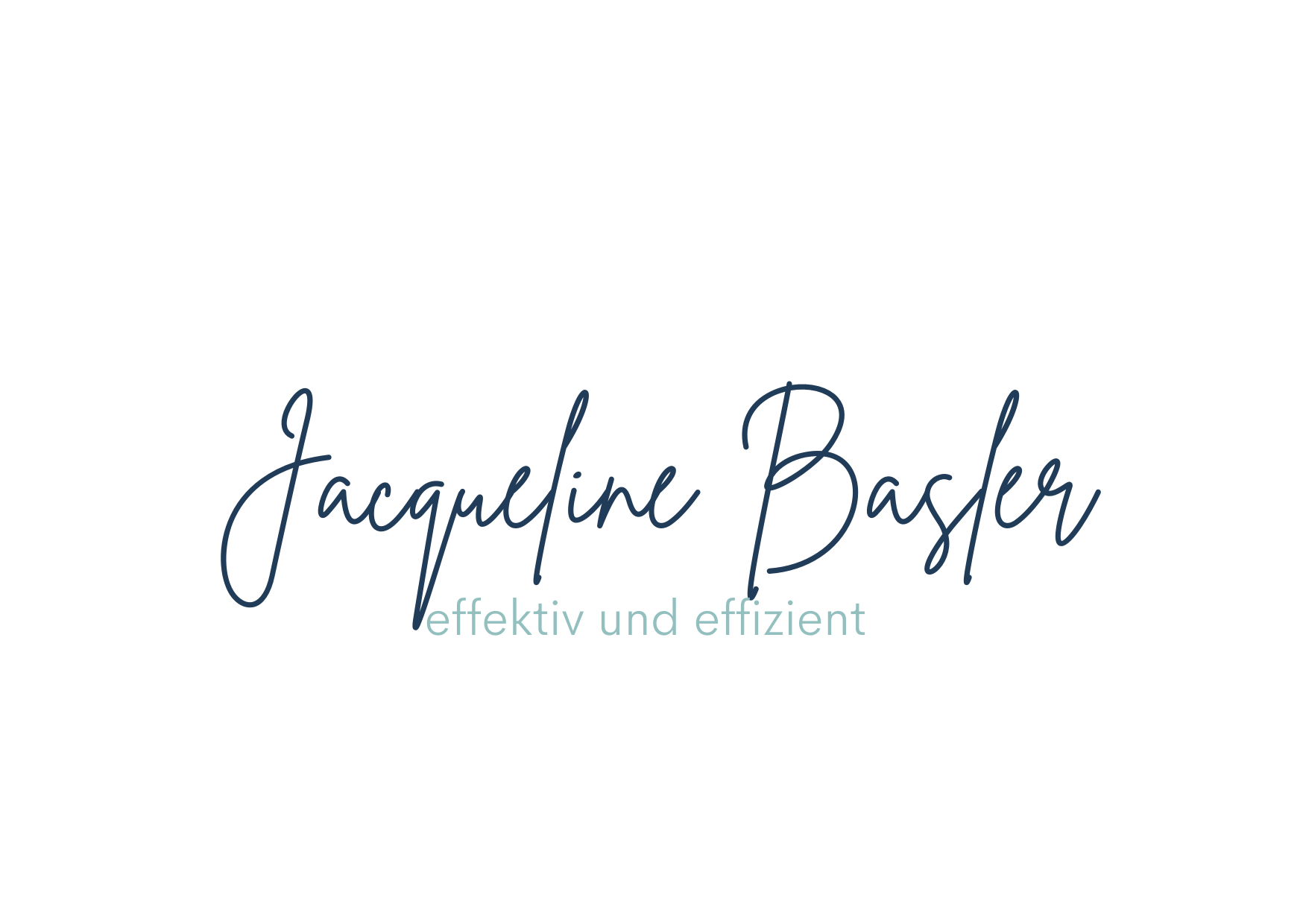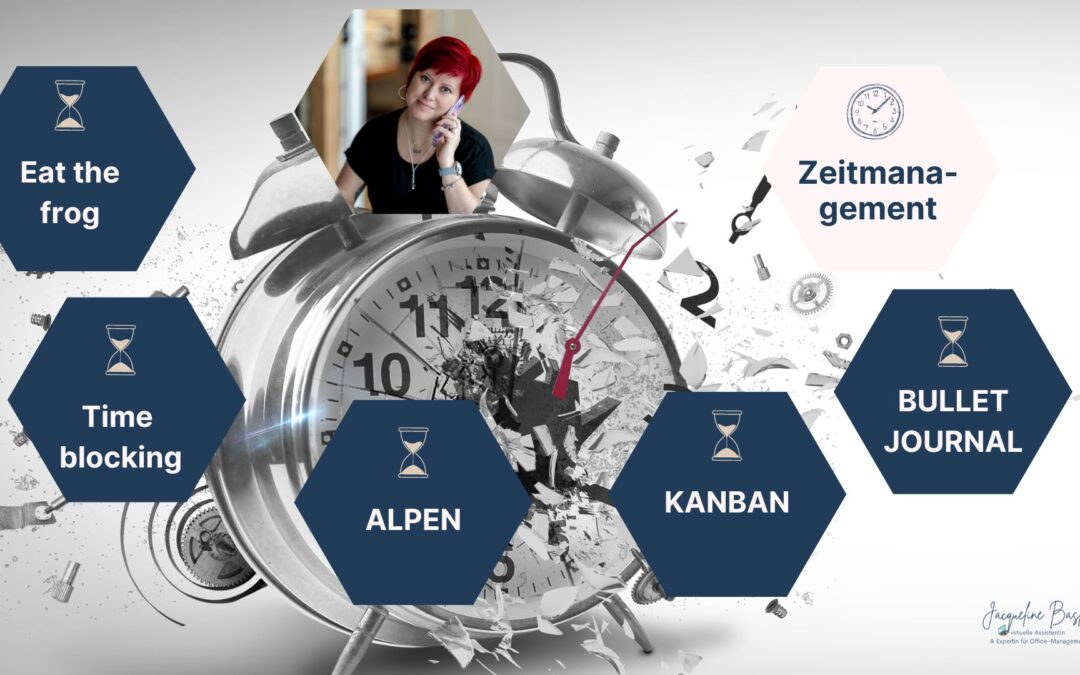As a self-employed entrepreneur and family manager, effective time management is essential for me.
The various tasks I juggle on a daily basis – from professional projects to organizing family life – require a clear structure.
Over the past year in particular, it has been essential to organize my time well in order to balance both professional and personal commitments.
Without a system, it would be almost impossible to keep an overview.
Time management helps me to set priorities, use my energy in a targeted manner and react flexibly to unexpected challenges – whether in business or in everyday family life.
As a self-employed person who takes on many roles, it is crucial not to lose focus and to plan tasks strategically.
With good time management, I create space for creative projects and personal relaxation, which not only increases my productivity, but also my quality of life.
It’s not just about working efficiently, but also about consciously shaping my life and focusing on what really matters.
Why is time management so important and what advantages does it offer?
In a world characterized by constant availability and a constant stream of new tasks, it is often difficult to maintain an overview and set priorities correctly.
This is exactly where time management systems come in.
They help to clearly structure the day, prioritize tasks and make optimal use of your own resources – especially energy and time.
A good time management system ensures that you not only get more done, but also tackle the right things at the right time.
The biggest advantage of such a system is the clarity and focus it provides.
Instead of feeling overwhelmed by endless to-do lists, you have a clear structure that shows you which tasks are really important.
This reduces stress, increases your efficiency and improves the quality of your work.
At the same time, it helps you to divide long-term goals into feasible steps so that important projects are not crowded out by short-term, urgent tasks.
Good time management creates space for the really important things and allows you to celebrate short-term successes and achieve more in the long term.
Ultimately, good time management not only improves productivity, but also promotes a healthy work-life balance.
By consciously organizing when and how you work, you can better separate work and leisure time, which leads to more satisfaction and less burnout.
Choosing the right time management system!
Choosing the right time management system depends heavily on individual needs and preferences.
There is no “one-size-fits-all” system that works for everyone.
When choosing a system, it’s important to consider how you work and what works best for you.
Do you have a lot of small tasks that you need to complete quickly?
Are you easily distracted by urgent but less important tasks?
It is worth trying out different methods to find out which one suits your everyday life best.
Some people also combine several systems to take advantage of the best aspects of each method.
Ultimately, the system you choose should help you stay on top of things, prioritize and use your time efficiently – without creating additional stress.
In the following section, I will introduce you to 5 different time management systems.
I have already worked with all of them and will tell you which one I prefer at the end.
Good time management is not about striving for perfection, but about finding the balance between structure and flexibility.
Which time management system is right for you?
1. time blocking
Time blocking is a method where you divide your day into blocks, each dedicated to a specific task or activity.
Instead of simply working through a to-do list, you plan in advance when you will do which task.
This gives you a clear structure and allows you to focus on one task at a time without being distracted by other tasks.
The idea behind time blocking is that you organize your time like a calendar and assign a specific time period to each task.
This prevents you from spending too much time on unimportant tasks or getting distracted by spontaneous things.
Time blocking is particularly useful for people who juggle many different projects or whose time is fragmented by meetings and other commitments.
A big advantage of time blocking is that it helps you to avoid procrastination.
If you know that you have to work on a task within a certain time frame, you will be more motivated to complete this task.
You can also schedule breaks to keep your energy up and avoid overworking.
This method is particularly suitable for people who want to bring structure and clarity to their working day and whose time is often influenced by external commitments.
2. eat the frog
“Eat the Frog” is a time management method that focuses on the most unpleasant or challenging tasks of the day.
The name comes from a quote by author Mark Twain: “Eat a live frog in the morning, and nothing worse will happen to you for the rest of the day.”
The idea is to do the biggest and hardest task of the day first thing in the morning to make the rest of the day more productive.
This method is particularly helpful against procrastination.
By tackling the most difficult task first, you take the biggest stress factor out of your day.
The “frog” is the task that is often put off because it seems either too big or too unpleasant.
Once this task has been completed, you have the feeling that you have already achieved something big, which increases your motivation for the rest of the day.
Eat the Frog works particularly well for people who tend to put off important tasks because they feel overwhelmed.
It takes discipline to focus on the essentials every morning, but the rewards are huge.
Once done, you can enjoy the rest of the day without the feeling of burden and pressure.
This method can also be combined with other techniques such as time-blocking to make the day even more structured.
3. the ALPEN method
The ALPEN method is a simple but effective time management system consisting of five steps.
The name ALPEN stands for “tasks, estimate length, plan buffer times, make decisions and follow up”.
This method was developed by German economist Lothar J. Seiwert and aims to plan the day efficiently while allowing sufficient buffer time for unforeseen events.
The first step is to write down the tasks you have to do.
Then estimate the length of the tasks to get a realistic overview of the day.
The next step is to plan buffer times – these are times that you reserve for unforeseen tasks or interruptions.
Ideally, buffer times should make up around 40% of your day so that you can react flexibly to spontaneous tasks.
The fourth step is to decide which tasks have priority and which can possibly be postponed or delegated.
Finally, there is the follow-up check, where you check at the end of the day whether everything went according to plan and what can be optimized if necessary.
The ALPEN method is particularly suitable for people who prefer a systematic and structured approach and want to remain flexible at the same time.
It helps you to plan your day realistically without overloading yourself and ensures that important tasks are not displaced by unexpected events.
4. kanban
Kanban is a visual time management system that originated in Japanese automotive production, but is now used in many areas to organize work processes.
It is based on the idea that tasks are divided into three phases: “To Do” (to be done), “In Progress” (in progress) and “Done” (completed).
These tasks are visualized on a Kanban board, either physically or digitally.
A Kanban board allows you to see all your tasks at a glance and track which phase they are in.
It helps to monitor progress and identify bottlenecks as you can see exactly which tasks are stuck in the “In Progress” phase.
The system is particularly useful for projects with many steps or for teams working on multiple tasks at the same time.
The advantage of Kanban is its flexibility and clarity.
As you can add or move tasks at any time, your workflow remains dynamic and adaptable.
It is particularly suitable for people who work visually and like to have a clear overview of their tasks.
By focusing on the flow of work and avoiding overload, Kanban helps you to work more efficiently and reduce stress.
5. bullet journal
The Bullet Journal is a handwritten system for planning and organization developed by Ryder Carroll.
It combines task management, calendar and notes in a single system.
The special thing about the bullet journal is its flexibility: you create the layout yourself and adapt it exactly to your needs.
It consists of various modules, such as monthly overviews, daily plans and so-called “collections” – lists that you can create for specific projects or goals.
The system uses symbols to distinguish between tasks, appointments and notes.
An important component is the so-called “rapid logging”, where you record tasks and ideas in short, concise bullet points.
This keeps your bullet journal clear and easy to customize.
You can design each day and each week individually, which is particularly attractive for creative and visual people.
The great advantage of the bullet journal is its flexibility and customizability.
You can make it as simple or as complex as you like, and it adapts to your personal needs and preferences.
It is particularly suitable for people who like to plan by hand and want to creatively organize their tasks and goals.
It also offers a nice way to integrate personal notes and reflections alongside organization.
Not all that glitters is gold!
Although time management systems offer many benefits, there are also some disadvantages or challenges that can arise depending on your personality type or work style.
Here are some common disadvantages:
For some people, a strictly structured method such as time-blocking is ideal, where each day is divided into fixed blocks of time to maintain focus.
Others prefer a more flexible approach such as the bullet journal, which leaves room for creativity while keeping tasks organized.
My input
I have already worked with all the time management systems and can tell you which one I prefer. I use Eat the Frog regularly, especially for unpleasant tasks such as tax returns, bookkeeping or phone calls – the latter is particularly difficult for me as I don’t like making phone calls.
I use time blocking to reserve specific times each day for tasks, which I then work through in these fixed time slots.
And through my work with Notion, I’ve become a big fan of the Kanban method – it’s just a great feeling to tick off tasks and have progress clearly in front of me.
Time management systems provide a valuable structure for organizing the working day, setting priorities and increasing efficiency.
They help to maintain an overview and ensure that important tasks are not overlooked.
However, such systems are not without their challenges: They can limit flexibility, create unrealistic expectations and encourage perfectionism.
It is important to choose the right system and adapt it to your own needs rather than being restricted by rigid structures.
Ultimately, a time management system should always serve to use your time wisely without creating additional stress.
The key is to find a balance between planning and flexibility in order to be productive, but also to create space for spontaneous and creative processes.
My input for your time management!
Book a free consultation now and find out how I can relieve you of technical and organizational tasks as a virtual assistant so that you can concentrate fully on your core business again!
Let me help you reclaim your time and avoid being overwhelmed.
About the author
I am Jacqueline, a self-employed virtual assistant, family manager and until recently a student on a distance learning Bachelor of International Management program.
During my time as an executive assistant, I realized that I like planning, organizing and structuring and that I have a talent for making other people’s lives “administratively” easier.
My mission as a VA is to give my clients more freedom, ease and time through my support – for a better work-life balance!
I am structured and organized and always have a smile on my face. I can familiarize myself with new software and systems very quickly and not only think about processes, but also like to develop them further (with you).
If you would like to know more about my background and my WORK – LIFE – BALANCE, please have a look at the page That’s me!over






